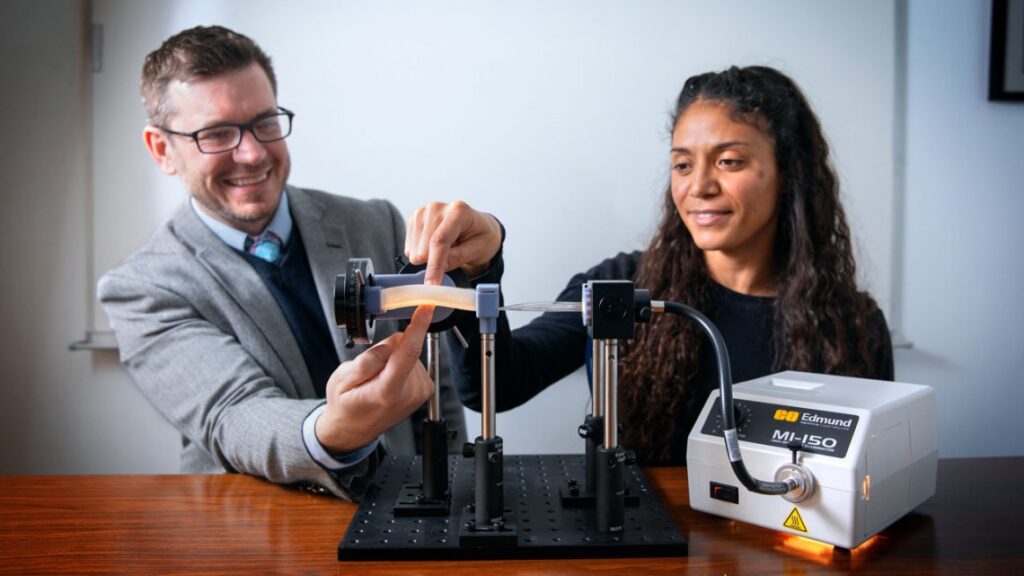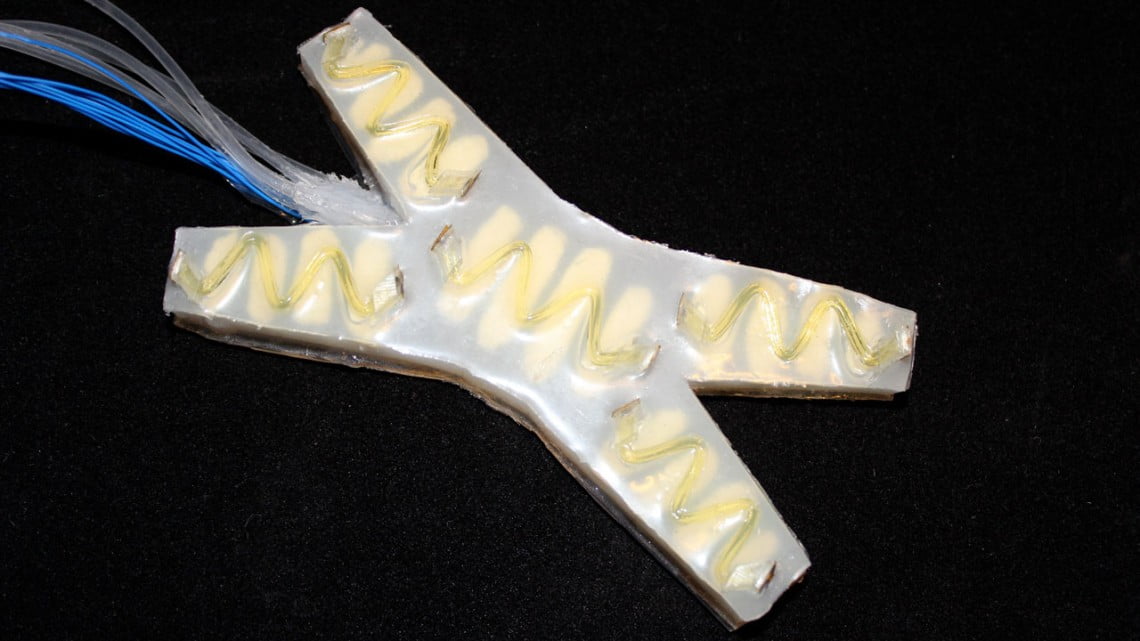Robots are increasingly on the crest of the wave. They have already invaded the factories, and are preparing to enter our homes on their legs.
Increasingly, however, we use them to go to remote environments that humans cannot reach, such as at the bottom of the sea or in distant outer space. To venture down there they will not only need energy and a means to get there: they will also need to be able to take care of themselves. In practice: self-repairing.
For this, a team led by Rob Shepherd, an associate professor of mechanical and aerospace engineering at Cornell Engineering, has combined optical sensors with a composite material to create a soft robot that senses when and where it's been harmed, and then heals itself.

How self-repairing robots are born
The scientific paper presenting the results obtained by Shepherd and colleagues, “Autonomous optical sensors for damage healing in intelligent soft systems,” was published December 7 in Science Advances. I link it to you here.
“Our lab tries to make robots more resilient and agile, so they operate longer and with more capacity,” Shepherd says.
The phases of the study
The first step for such repair to occur is that the robot must be able to identify that there is, in fact, something that needs to be repaired.
For this, Shepherd's Organic Robotics Lab created stretchable optical sensors. In the latest study, the researchers combined the sensors with elastomers capable of "healing" the damage they receive.
The result? SHeaLDS, “self-healing light guides” that provide reliable dynamic sensing, are resistant to damage, and can self-heal from cuts at room temperature without any external intervention.
To demonstrate the technology, the researchers installed SHeaLDS in a soft robots, a sort of four-legged starfish. The researchers punctured one of its paws six times, and the robot detected the damage and “self-healed” in about a minute. Not only that: the self-repairing robot also autonomously adapted its progress based on the damage it had detected.
Self-repairing robots, are there any weaknesses?
One above all, I'll make it short: the material is resistant, but it is not indestructible anyway.
“It has properties similar to human flesh,” Shepherd said. “It doesn't heal well from burns, or exposure to acids, because its chemical properties change. But he does a great job on the cuts."
Shepherd plans to integrate the SHeaLDS with machine learning algorithms that recognize tactile events. In practice, the way to create "a very resistant robot that has self-repairing external surfaces that are sensitive to the external environment". In a word: leather.
Another step towards robots more like us.


